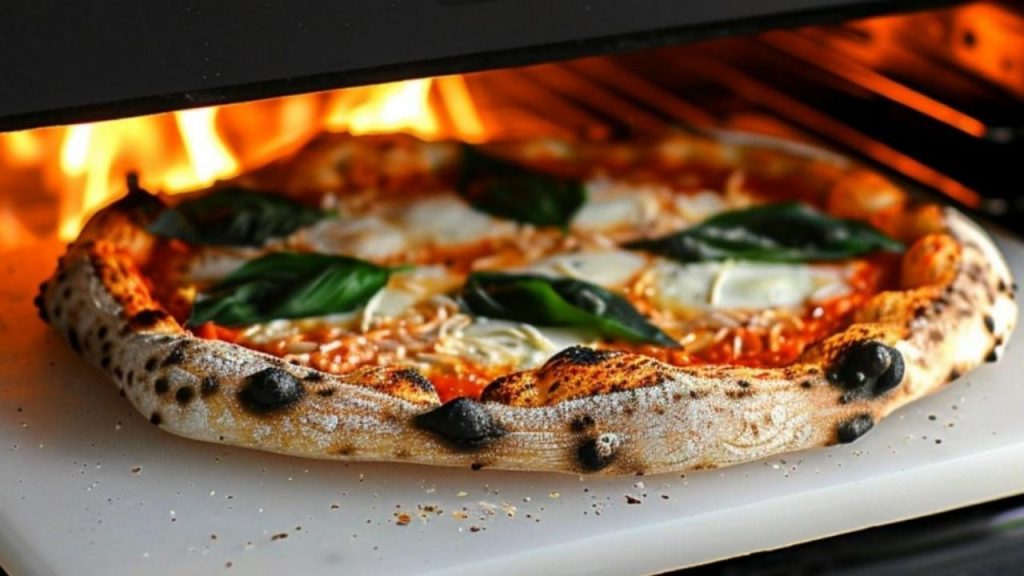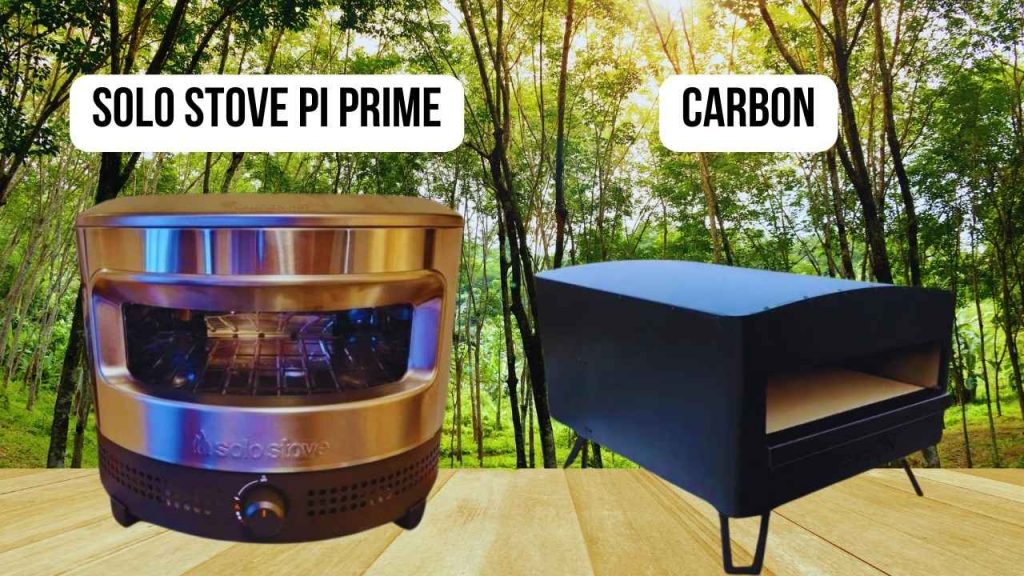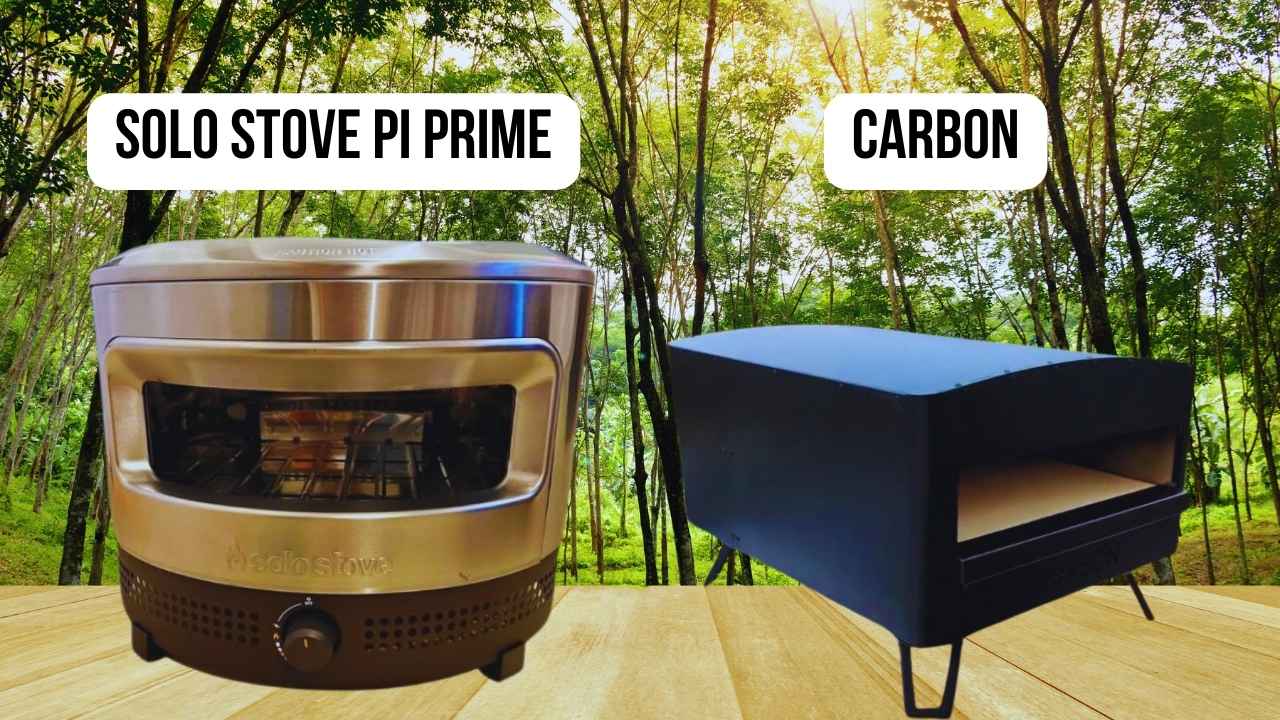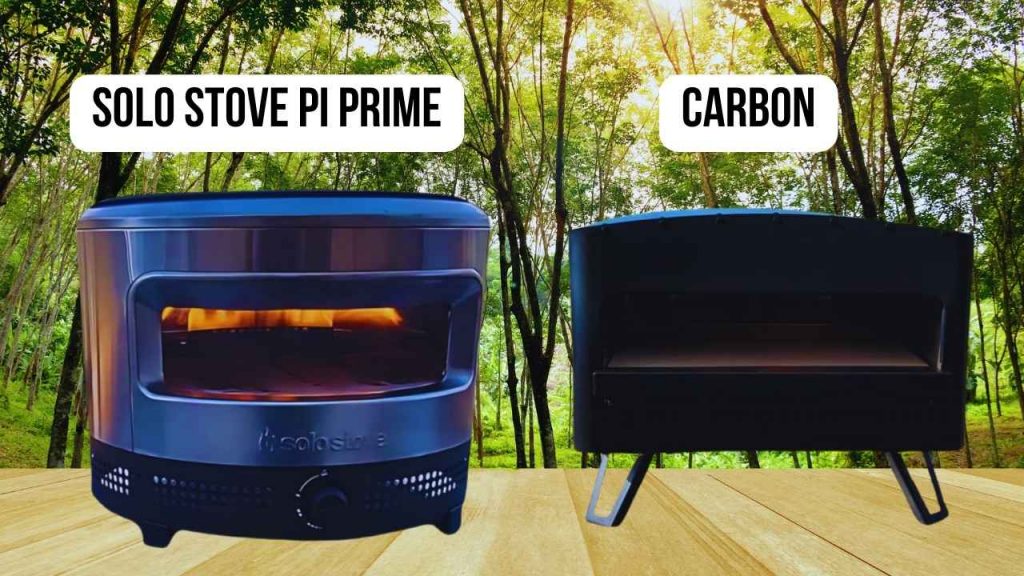As a restaurant chef with over 10 years of experience at my restaurant, Dequte Restaurant LironBoylston, I’ve had the opportunity to test many pizza ovens—both for professional and home use. In this article, I’ll be comparing two models I’ve personally used in my kitchen: the Solo Stove Pi Prime and the Carbon Pizza Oven.
I evaluated them based on the most important real-world factors: quality and materials, temperature control, shape, first-time usage impressions, power source, size, ease of cleaning, and of course, I conducted a real Margherita pizza cooking test to see how long each one takes and how good the pizza tastes.
If you’re curious about my testing process in more detail, feel free to check out my separate article where I break down exactly how I test pizza ovens step-by-step.
-
The Solo Stove Pi Prime is a sleek, propane-powered pizza oven that heats up fast, cooks evenly, and is perfect for both backyard pizza nights and restaurant-quality experiments.
-
The Carbon Pizza Oven stands out with its dual-fuel design and powerful burners, offering a wood-fired flavor with modern flexibility.
This article features a thorough comparison between the Solo Stove Pi Prime and the Carbon Pizza Oven based on my personal tests.
Even though they weren’t included in the TOP-5 pizza ovens, they’re still strong choices.
Affiliate disclosure: If you find this comparison helpful and decide to buy one of these ovens, I’d really appreciate it if you used my referral links. It won’t cost you anything extra, but it helps support my blog and the time I put into testing.
Solo Stove Pi Prime VS Carbon: Quality and Materials
| The Solo Stove Pi Prime is built with premium stainless steel, offering solid construction and excellent heat retention. It feels durable and professional. |
The Carbon Pizza Oven also uses stainless steel with a rust-resistant coating and includes firebricks for steady heat, but it feels more industrial and bulkier.
|
Solo Stove Pi Prime VS Carbon: Temperature Control
| While the Solo Stove Pi Prime lacks a built-in thermometer, its propane flame is steady and easy to manage with a thermometer gun. |
The Carbon Pizza Oven features dual burners (upper and lower), allowing more precise temp control, but it requires a bit more learning to avoid uneven heat.
|
Solo Stove Pi Prime VS Carbon: Shape
| The Solo Stove Pi Prime’s demi-dome shape and flared opening are ideal for even heat distribution and effortless pizza rotation. |
The Carbon Pizza Oven has a more square design with a lower opening, which works but doesn’t circulate heat as evenly as the Solo Stove’s curved chamber.
|
Solo Stove Pi Prime VS Carbon: First-Time Usage Impressions
| Using the Solo Stove Pi Prime for the first time was smooth and intuitive. The setup was quick, and the first pizza was nearly flawless. |
The Carbon Pizza Oven took some trial and error. First bake needed adjustments in flame and timing, but once dialed in, the results were solid.
|
Solo Stove Pi Prime VS Carbon: Power Source
| The Solo Stove Pi Prime runs solely on propane, offering quick startup and consistent cooking. It’s simple, reliable, and efficient. |
The Carbon Pizza Oven also uses propane and adds the benefit of two burners for top and bottom heat zones—but it lacks the option for wood-fired cooking.
|
Solo Stove Pi Prime VS Carbon: Size
| Weighing only 30 lbs, the Solo Stove Pi Prime is very portable yet still handles 12-inch pizzas comfortably. Great for patios and outdoor setups. |
The Carbon Pizza Oven is much heavier at 60 lbs. It fits pizzas up to 15 inches but isn’t ideal for moving around due to size and weight.
|
Solo Stove Pi Prime VS Carbon: Ease of Cleaning
| The Solo Stove Pi Prime is easy to clean. Wipe the exterior and brush the stones after use—minimal effort. |
Cleaning the Carbon Pizza Oven is a bit more involved. While it comes with a useful brush, stuck cheese or toppings require more scraping and care.
|
Pizza Cooking Test

To fairly evaluate both ovens, I conducted the same Margherita pizza test using identical dough, sauce, and toppings.
Solo Stove Pi Prime heated up to optimal cooking temperature (around 900°F) in just 15 minutes, thanks to its efficient propane setup and demi-dome shape. Once preheated, I launched a 12-inch Margherita pizza onto the stone. It cooked beautifully in just 90 seconds. The crust came out blistered and golden with a satisfying crunch, the cheese was perfectly melted, and the tomato sauce had that sweet, rich burst of flavor only high heat can achieve. The evenness of the cook from center to edge was excellent—no rotating needed mid-bake.
Carbon Pizza Oven reached a hot stone temperature of about 740°F in around 10 minutes, with the help of its dual propane burners. My first attempt at a Margherita pizza cooked in 80 seconds, but the bottom was slightly underdone while the cheese on top melted well. On a second try, with the stone heated to 760°F, I got a much better bake. The crust was nicely browned on the edges, though the center needed an extra 10–15 seconds to fully crisp up. Flavor-wise, the result was still delicious, but required more attention and adjustments during the process.
In conclusion, Solo Stove Pi Prime offered a more reliable, evenly cooked pizza with less effort, while the Carbon Pizza Oven delivered great results too, but needed more fine-tuning to get everything just right.
How We Tested

To compare the Solo Stove Pi Prime and Carbon Pizza Oven fairly, I used both units in my restaurant kitchen under the same conditions. I tested each oven multiple times over the course of a few weeks using consistent ingredients—same homemade dough, same Margherita toppings, and same 12-inch pizza size. Every oven was preheated fully before launching the first pizza, and I used an infrared thermometer to monitor the stone temperature for precision. I paid close attention to how evenly the heat was distributed, how quickly the ovens recovered between bakes, and how well the pizzas cooked from edge to center. I also considered how practical each oven felt to use in a professional setting—how easy it was to maneuver the pizza peel, adjust heat levels, and clean up afterward. My goal was to replicate how a home chef or serious enthusiast would use these ovens, and to identify which one delivers better overall performance without being overly complex.
Conclusion

In the end, whether you go with the Solo Stove Pi Prime or the Carbon Pizza Oven really depends on your cooking style and preferences. Both ovens are excellent, and I’ve enjoyed using each of them in my professional kitchen. However, if you’re after ease of use, fast heat-up time, and consistent results, the Solo Stove Pi Prime slightly edges ahead in my experience.
If you decide to buy one, I’d truly appreciate you using my referral links — it helps support my blog and keeps the reviews coming. I earn a small commission at no cost to you.
Check out our list of the top pizza ovens.



